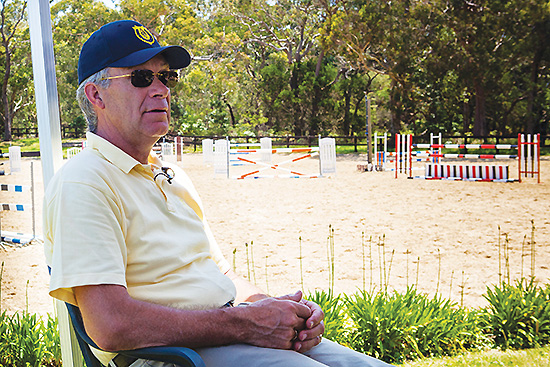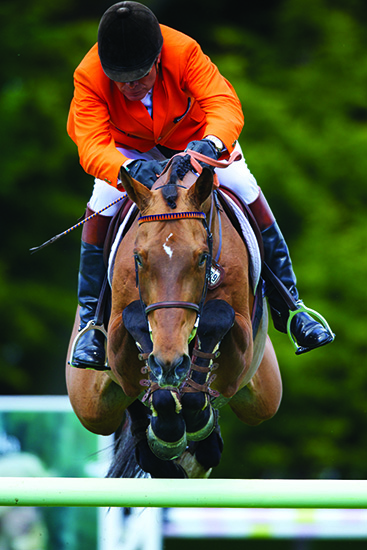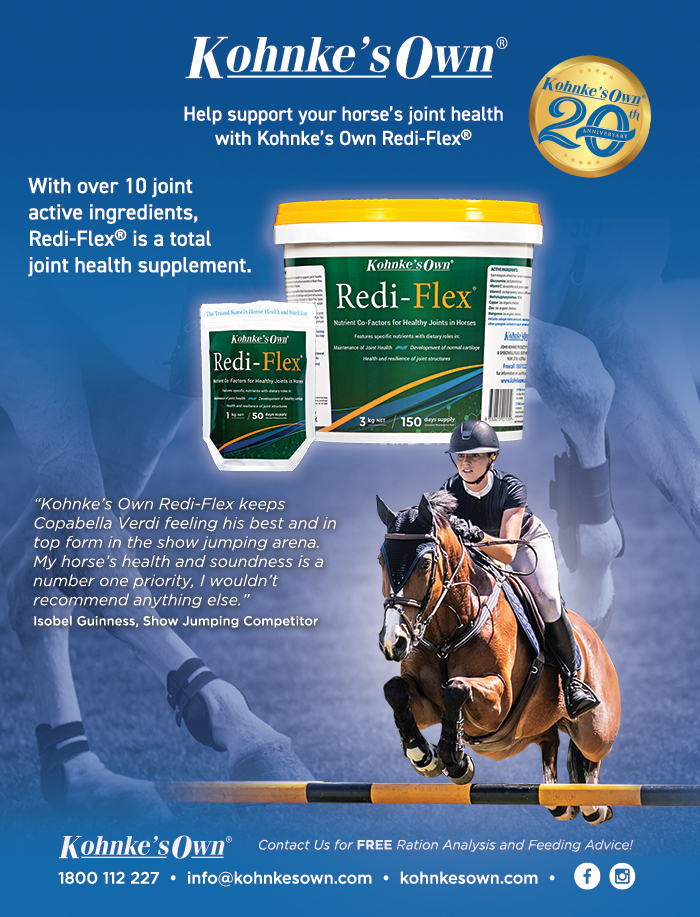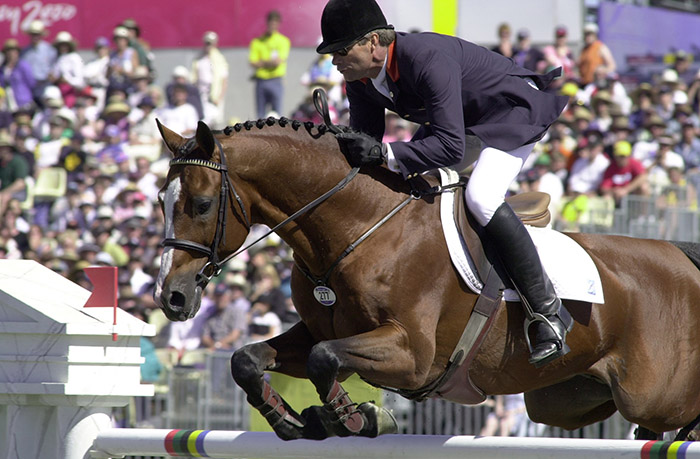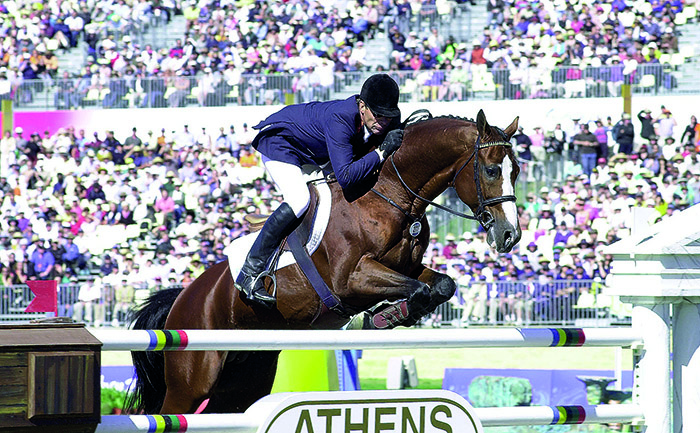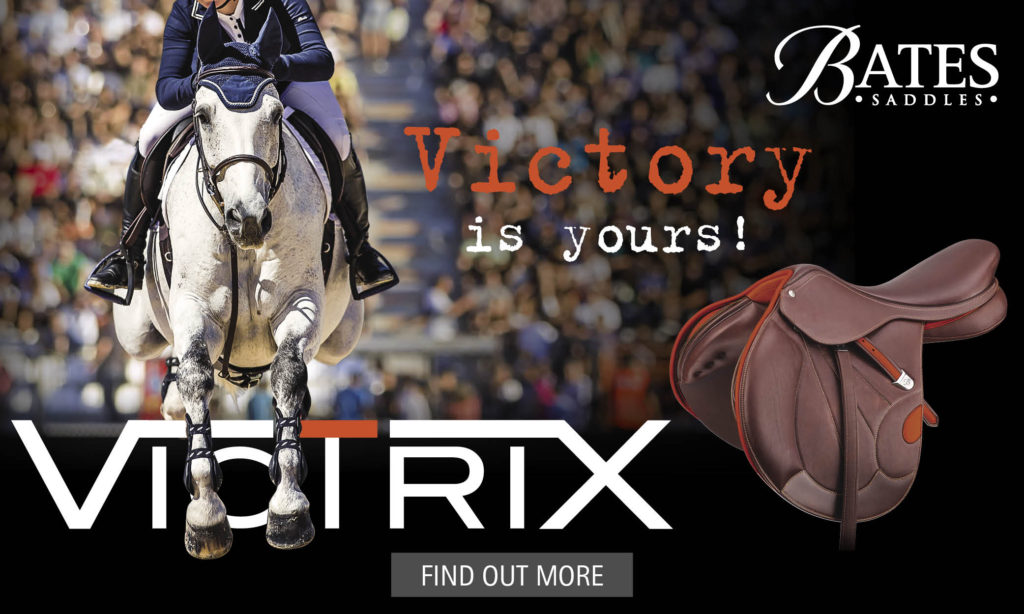Showjumping rider and trainer, Albert Voorn makes a habit of speaking his mind, and speaking good sense when he does. Most recently he has created a stir with his interview on Horse TV – a clip that has been viewed almost half a million times!
Albert Voorn, working in Australia – pic Rebecca Ashton
“What I’ve seen, especially with the young girls, is a lot of anger,” he told the interviewer. “They get so angry with their horses. Is the horse their partner or their friend? I can understand being very ambitious but it’s a shame that when we make mistakes it all goes back on the horses and that is where we have to control that anger.
At the end of the day we are using and abusing an animal for our own pleasure. People don’t have self-control.”
Albert followed up with an interview with Britain’s Horse & Hound, where he made the point: “Riders want it all now, they want it quicker and they are more and more spoilt. Why do they ride? They want results, but they won’t put the time in. I teach so many horses in a week and I travel a lot and everybody says they love the horse – he needs to go into the paddock every day for example because it’s better for the horse. The moment the rider gets his foot in the stirrup the love for the horse has gone.”
Albert and Taballo, third at the Dutch Championships in 2013
story continues below the advertisement
Share Albert’s philosophy at Clinics conducted in Australia
“The more simple good training is, the more boring it gets. At the end of the day, that is the case. The more exciting it gets, the more fragile it gets. For us to ride so that it looks very easy to those watching, and very soft, that’s the beauty of riding and that then is the excitement of it.”
“When you are mentally and physically ready, we trot! Rising. Just allow them a little bit to loop around the working area. No problem. We are warming up.
I heard you were riding rollkur yesterday. I don’t want to see rollkur. I see it and I shoot you! Just tell them where to go and what speed. Don’t think about collection or any of that.”
“Both reins in the outside hand “….to make sure that we are 100% relaxed, no tension in the body, but the body must not move. Also, being totally quiet does not mean being totally stiff. You must be aware of what you do so you can change what is wrong. If you are not aware, you cannot change it.”
“This exercise is for your feeling, do not ride with the handbrake on. The horse should allow us to ride it forward. The moment we have to slam on the brake, there is no control.
“If he goes against you, spur him forward. Just two spurs and let go straight away otherwise they lock on it. Have a flexible foot so you can use the spur when you need it, but you need to keep asking yourself, ‘Can I ask less consistent spur?’”
Our own Colleen Brook, who worked with Voorn in Australia recalls: “Albert Voorn said many times, ‘We must take the leaning and hauling out of our riding’.
“Now go faster. This is the progression. Our upper body is straight and we sit in the middle of the horse and we look where we go. Our seat is carrying our whole body weight. The pressure in your stirrup is no more than your foot.”
“Now, whole arena in a light seat with reins back in two hands. While you do it, think about your lower leg not moving backwards.”
“Canter change, allow your inside leg to go forward and make the change with the outside spur. Then reins in the outside hand again with slight flexion to the inside. When you feel the horse goes a little slower, it is the spur that makes him go forward, not the seat and the movement of the body. If you push with your seat, it opens the horse up too much and it’s hard for him to collect. Stay neutral in your position.”


